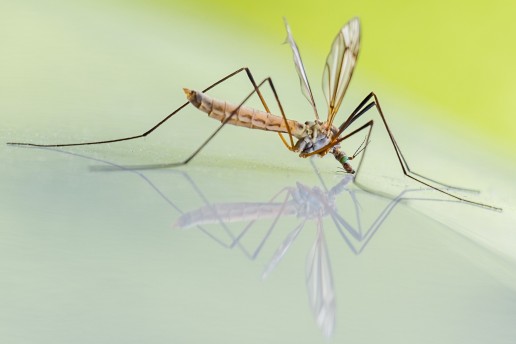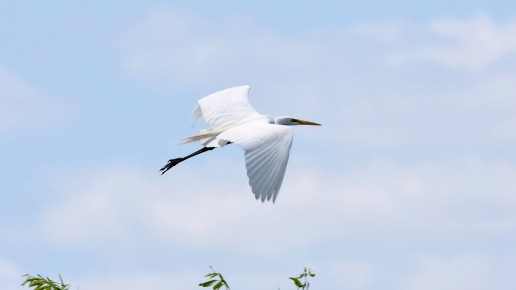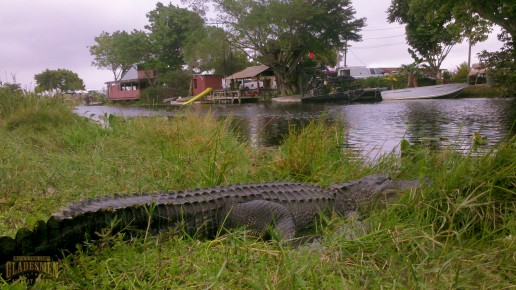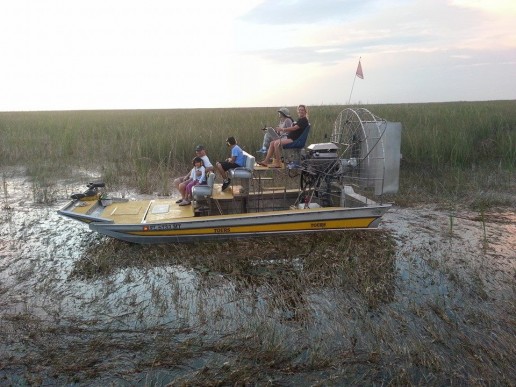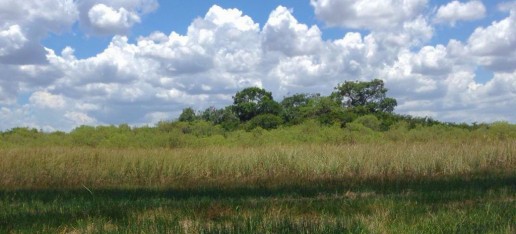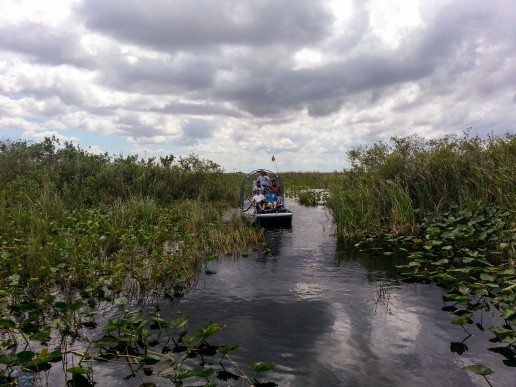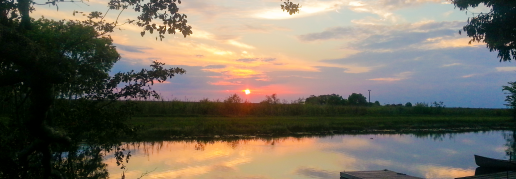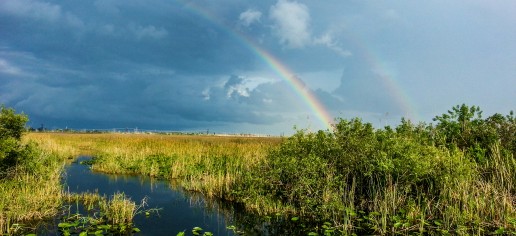Mosquitoes In The Everglades
Mosquitoes are easily the most disliked animal in the Florida Everglades. Their buzzing and biting makes them a nuisance to people, especially during the Everglades wet season. While taking an Everglades eco tour, you may be surprised to learn that even they play a part in maintaining their environment. But here is some information about these insects to help you understand them and prepare for them before your Everglades visit.
Some Information About Mosquitoes
Mosquitoes are easily are most abundant during the Everglades wet season from May through summer. But their numbers drop significantly during the drier winter months. The wet summer months see peak mosquito activity because both their larvae and eggs can only thrive in water.
Male mosquitoes only feed on flower nectar.
Females bite animals for protein to develop their eggs.
A nuisance only to humans, the mosquito is a vital link in the Everglades food web. By laying their eggs in the water, their larvae are a food source for fish, turtles, frogs, wading birds, and other insects.
Mosquito Safety In the Everglades
Given the abundance of mosquitoes in the Everglades, you should take precautions to avoid their bites as best you can. When you take an Everglades eco tour or any other private airboat tour at Mack’s Fish Camp, we do provide bug repellent. But here are some tips to avoid mosquito bites when you visit the Everglades.
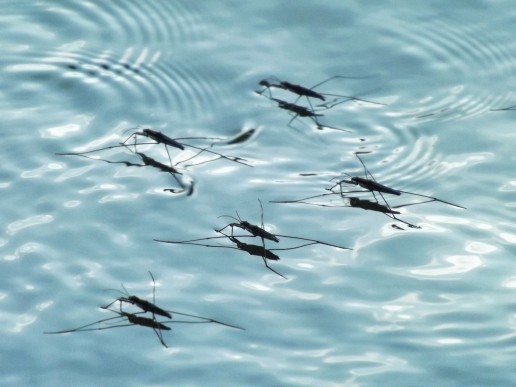
- Stay in the sun and avoid shaded areas. Those tiny vampires love shady spots.
- Don’t breathe… heavily. Mosquitoes are attached to carbon dioxide, and the harder you breathe out, the easier it is for them to find you.
- Wear light colored clothing. In addition to being a good fashion choice for the Florida sun, mosquitoes are less attracted to them. They are drawn to darker colored clothes like navy blue, black, or red.
- Avoid dense vegetation and bodies of standing water. Mosquitoes are concentrated in these areas (vegetation) or are their breeding grounds (water).
The Everglades is Zika-Free
While they are known carriers of disease, there have been no reported cases of mosquitoes in Everglades carrying the Zika virus. In fact, after collecting over 400,000 mosquitoes in the Everglades, a team of Yale scientists found no Aedes egyptii species, the known carriers of Zika.
Though considered a pest to people, mosquitoes are a valued part of the Everglades ecosystem. If they prove too overwhelming when you visit the Mack’s Fish Camp, then maybe you should explore it on an Everglades eco tour. A mosquito may be able to fly 40 miles for a snack, but it sure can’t keep up with an airboat!
Everglades Snakes
The Florida Everglades can evoke images of many different animal species like alligators and egrets, but not snakes so much. Among the hundreds of species of Everglades wildlife that dwell here, there are 29 species of snakes, only 4 of which are venomous. They may not stand out like a roseate spoonbill or a bull alligator, but you could spot one lurking in the marshes and tree islands on an everglades airboat tour.
The Everglades offers the exciting opportunity for all visitors to see a unique environment and the animals that live there up close and in person. Like the other wildlife here, snakes play a vital role in the ecosystems of the Everglades. Whether you’re looking to visit the ‘glades, are just curious about Everglades snakes, and maybe wondering which ones to avoid, here’s some information about these reptiles.
Non-Venomous Everglades Snakes
Red rat snake – these constrictors can climb trees and are found in hardwood hammocks. Their reddish-orange to brownish-yellow patterning outlined in black makes them easy to spot. But, they’re known to spend time underground mostly.
Eastern Garter Snake – Averaging at 18-26 inches long, these snakes are recognized by the three yellow stripes that run down their bodies. They prefer moist areas like the sawgrass marshes to feed on small frogs, fish, and salamanders.
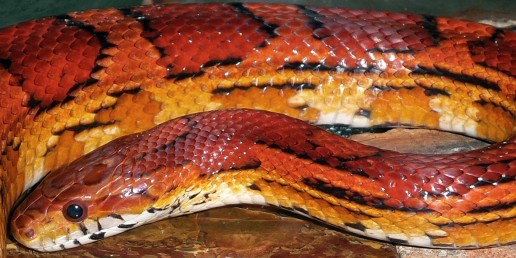
Scarlet King Snake – This snake bears a strong resemblance to the highly venomous coral snake, but is distinguished by its red, pointy nose. It gets its royal name because it can eat venomous snakes without being affected by their venom.
Burmese Python – This exotic invasive species has recently passed the American Alligator as the apex predator of the Everglades. With an average length of 10 – 18 feet, the Burmese python is the third largest living snake in the world! These snakes arrived in the Everglades as abandoned pets.
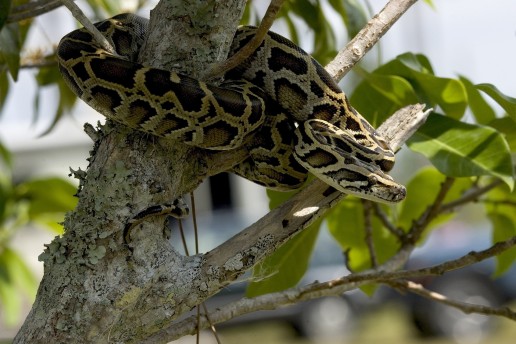
Venomous Everglades Snakes
As was mentioned earlier, there are only 4 species of venomous snakes that reside in the Everglades.
Coral Snake – A pretty sight to behold, the coral snake is a bright and colorful blend of red, black, and yellow. Preferring to stay underground, they are rarely spotted and difficult to see. Though they account for less than 1% of all snake bites, the coral snake is highly venomous.
Pygmy Rattlesnake – pygmy rattlesnakes have thick, greyish bodies with dark blotches on their backs, making them hard to spot. They are among the smaller species of rattlesnakes, averaging between 14-22 inches long. Pygmy rattlesnakes prefer swamps and sawgrass marshes, but can be found in other habitats.
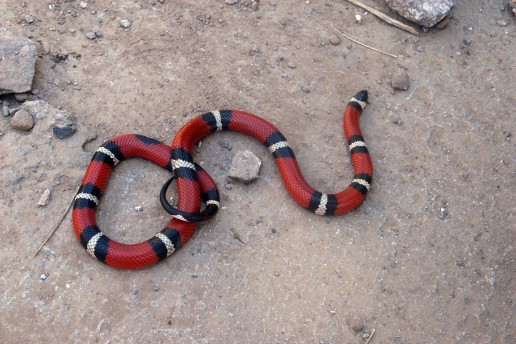
Florida Cottonmouth – Also known as the water moccasin, the Florida Cottonmouth is the only venomous water snake in North America. The Florida Cottonmouth can be identified by the dark bands that run down from each eye and their dark reddish to greyish, thick bodies. These strong swimmers are found in other habitats.
Eastern Diamondback Rattlesnake – Reaching up to 7 – 8 feet long, the Eastern Diamondback Rattlesnake is the largest venomous snake in North America. They are tan to greyish with a black diamond pattern on their backs, and their tails are tipped with a large rattle. Diamondback Rattlesnakes can be found in the drier habitats of the Everglades, like sandhills are hammocks.
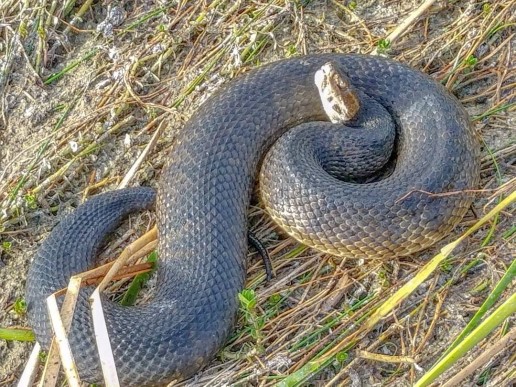
As menacing as they may look to some, snakes play their part in the Everglades food web. Everglades snakes regulate insect and rodent populations, and even other venomous snakes by eating them! Though they are often shy, you’re likely to see them among the many other varieties of wildlife on an Everglades airboat tour at Mack’s Fish camp.
Invasive Species in The Everglades
Thousands of native plants and animals reside in The Florida Everglades and help its habitats to thrive. But as massive as the Everglades is, all 1.5 million acres, it is vulnerable to invasive species that can harm the ecosystem here. Here is some information on some of this non-native Everglades wildlife, but you’re probably wondering…
What is an Invasive Species?
An invasive species is a plant, animal, bacteria, or other living thing that is non-native to the place it inhabits. They can grow and multiply quickly, and are harmful to their non-native habitat, the health of humans, even the economy of the places they invade. Invasive species can interrupt their adopted environments severely, and can even cause Everglades plants and wildlife to go extinct.
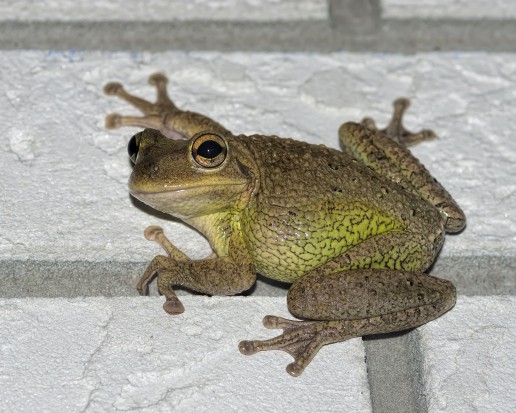
Invasive species have entered the Everglades by:
- Being released by local pet owners that don’t want to care for the anymore
- Being brought to Florida by or to sell on black markets
- Hitching a ride with travelers or foreign ships arriving in our ports

How Invasive Species Enter the Everglades
Invasive species can and have impacted the Everglades in several ways. The Burmese python has become well-known throughout America for feeding on native animals, including the American alligator, making them the dominant, or apex predator of the Everglades. Burmese pythons also pose a threat to people living near the Everglades, along with their pet dogs and cats. They often eat the young of native species, which shrinks the populations of their prey over time.
Invasive Everglades Plants
There are also invasive plant species impacting the Everglades as well. The Old world climbing fern affects several Everglades habitats from cypress swamps to pineland forests. Climbing ferns grow in dense concentrations which can smother native plants and rob them of sunlight. They can also act as a ladder to fires and draw them up to the canopy of the forest, burning areas that would normally be spared. This invasive plant can even change the water flow of streams with its dense roots, which can significantly affect Everglades ecology.
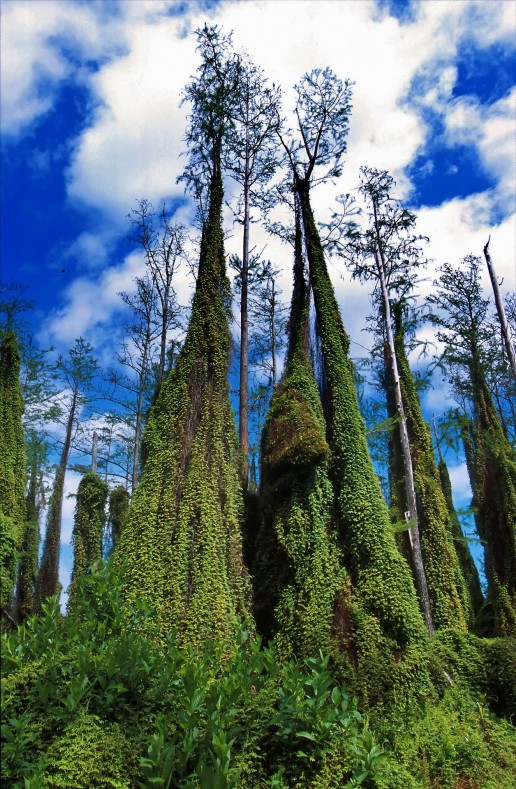
How you can help
- DO research before buying an exotic pet. Understand its needs, lifespan, how big it can grow, and if it is safe to own.
- DON’T release your pet into the wild if you no longer want it. This applies to fish and aquatic plants, too.
- REPORT invasive species sightings by calling 1-888-IVE-GOT-1 or online at www.IveGot1.org
At Mack’s Fish Camp we enjoy having the privilege to share the beauty of the Everglades ecosystem with the world. We see the preservation of this environment and the Gladesmen Culture as one in the same. We also educate our visitors about Everglades ecology, including invasive species on our Everglades airboat tours.
Birds You'll See on an Everglades Eco Tour
South Florida is known for its incredible biodiversity, and this is especially true regarding Everglades bird species. The famous naturalist John James Audubon, for whom the National Audubon Society is named, was in awe of Florida’s birds, saying how “The air was blackened by whistling wings.” There is a variety of types of birds to be found on an Everglades eco tour, such as wading birds, birds of prey, migrating birds, and land birds.
Everglades Wading Birds
Wading birds are named for how they wade in shallow water to stalk their prey, making the River of Grass an ideal habitat for them. During the Everglades dry season, which lasts from December to late May, they congregate in large groups to mate and nest. Wood storks, egrets, Great Blue Herons, ibises and roseate spoonbills fill both the sky and sawgrass marsh when the water levels are at their lowest.
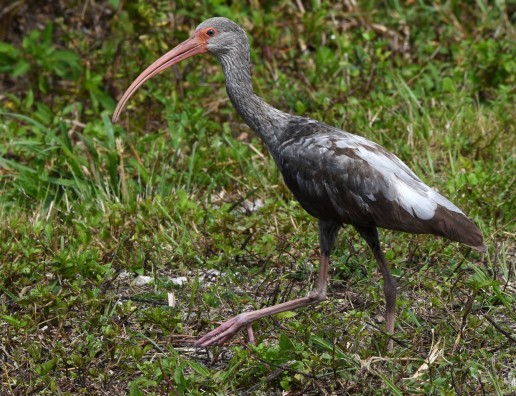
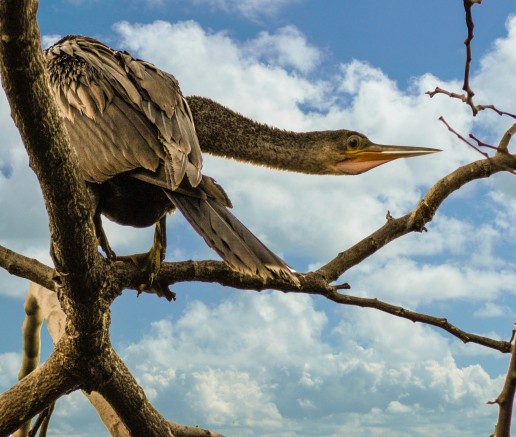
You may notice another long necked bird with a pointy beak swimming and diving in deeper water before emerging with fish in its mouth, the anhinga. Anhingas, nicknamed “snakebirds” for how they swim with their long, snake-like necks above the water, are actually water birds despite their similarity to wading birds.
Birds of Prey in the Everglades
Anhingas and herons do look cool while they hunt, but can pale in comparison to the swiftness and power of birds of prey that reside in the Everglades. These impressive raptors hatch during the dry season just like wading birds, but they’re off any hunting on their own by four months of age, as is the case of the red-shouldered hawk. Ospreys are another exciting bird of prey to watch, preferring to hunt fish by diving down with outstretched claws to snatch them up.
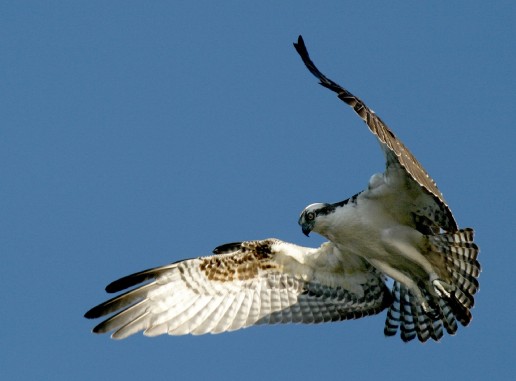
Migrating birds vacation here, too!
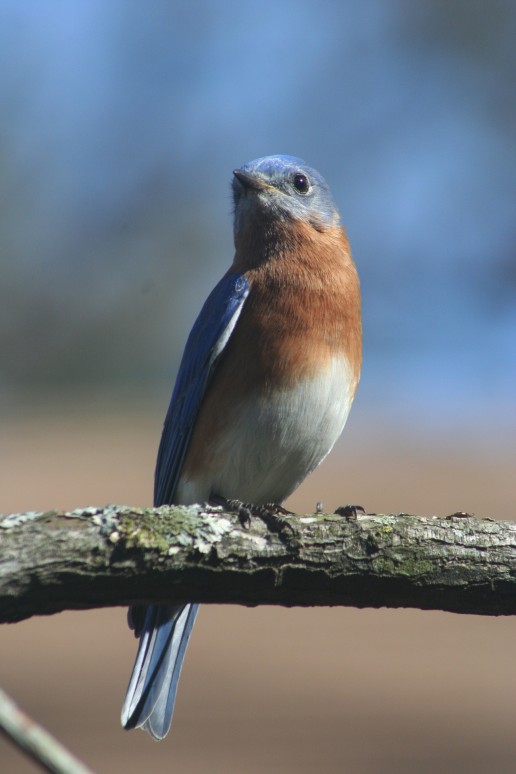
Residents of South Florida playfully refer to tourists that visit here in the winter months as “snow birds”. Local birdwatchers see plenty of the feathered version in the Everglades around this time as well. The native beauty of purple gallinules and roseate spoonbills is complimented by migratory birds like cardinals and eastern bluebirds.
Regardless of season, you can see plenty of Everglades birds and wildlife near Miami at Mack’s Fish Camp. If you’d like to know more, please contact us online or call us toll-free at 786-536-7400. Or you can book an Everglades eco tour online.
Bizarre Foods In the Everglades
Residing in the vast wilderness of the Florida Everglades, for five generations the Gladesmen Culture has endured by living off of the land. The many different habitats here have provided us with a great bounty of food from both the land water. A few years ago, TV host Andrew Zimmern cam to Mack’s Fish Camp to sample some Gladesmen cuisine as part of his Travel Channel program, “Bizarre Foods”.
The Other Florida
In the episode “The Other Florida”, Andrew spent the afternoon with Keith and Marshall Jones, who were happy to share a glimpse of Gladesmen Culture with the world (You can watch it here). They took an airboat ride into the Everglades to show Andrew the land they call home. They also grabbed a few resources from it that they call supper in the Glades, some Bracken fern fiddleheads to have as a side dish. For an entrée, Marshall made fried and grilled frog legs from the haul he and Keith had caught frog gigging the night before.
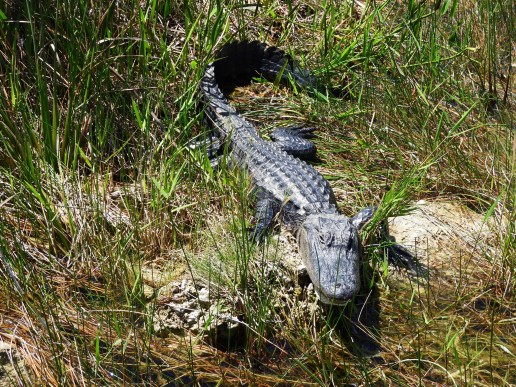
It's Not TV, It's Gladesmen Culture
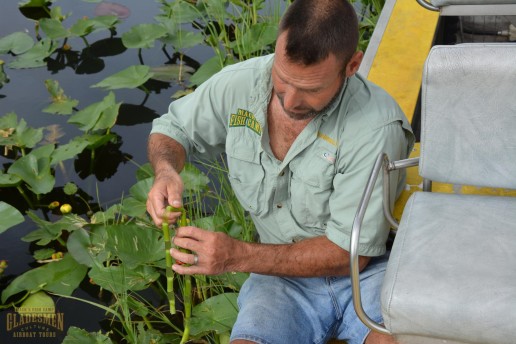
All in all, Andrew had a great time visiting and exploring our “Other Florida”, and found our distinct cuisine to be as delicious as it was bizarre. Anyone who comes to the Everglades and dines on the wild plants and game animals here usually finds them to be a real treat! But the Gladesmen living here have thrived on those foods, with marshes, sloughs, and hammocks acting as their grocery store.
Florida gets its name for being full of flowers, and there are plenty of flowers and plants growing in the Glades, many of them good for eating! Amaranth, dollarweed, and Bracken ferns can make for great salad greens. A few wild Florida plants can be used to make tea also, such as blackberry leaves, roots and bark from sassafras, or young pine needles.
Try this at home, VERY carefully
When preparing wild plants, it’s important to how to make and consume them safely in some cases. For the fiddlehead (Bracken) ferns we cooked for Andrew Zimmern, we made sure to blanch them in salt water then shock them in ice water. Doing this greatly reduces certain chemicals in them that while not poisonous or toxic, can be harmful if eaten over time or too frequently.
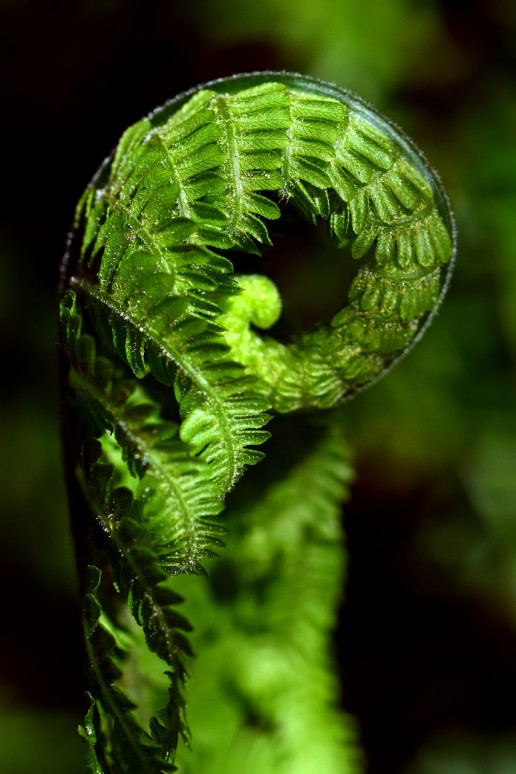
When life hands you gators...
One food staple of the Gladesmen Culture that can’t be overlooked is alligator meat. With the Everglades having so many of them, you could say, “When life hands you gators, make Gatorade.” While probably not the best ingredient for a sports drink, American alligator meat tastes great no matter how it’s cooked. It’s also packed with protein, having nearly 30 grams in a 3.5 ounce serving.
With so many resources available in the South Florida Everglades to live on, it truly does feel like living in paradise!
Why Your Child Should See the Everglades
For many kids, they might see Florida as the bottom right corner of America, or more likely as the place they went to that fun theme park. Even kids living in Florida might know as much, along with maybe who Ponce Deleon is or how to spell “Okeechobee”. No matter where they’re from, any child can learn a lot on an Everglades airboat tour and have a blast at the same time!
Dinosaurs live in the Everglades
The Everglades is home to an animal descended from the mighty dinosaurs, the American alligator. They’re so abundant here that you and your child may lose count of how many you spot on an Everglades airboat tour. Though far from cuddly, they’re mostly calm and docile creatures, but are still wild animals and should be regarded as such.
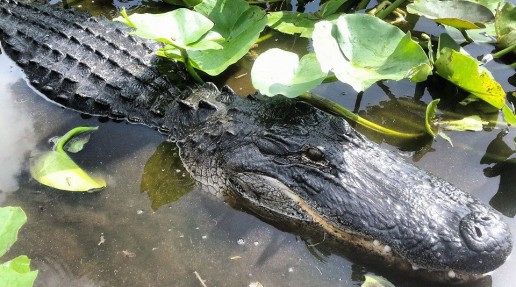
350 Species of birds live here, too!
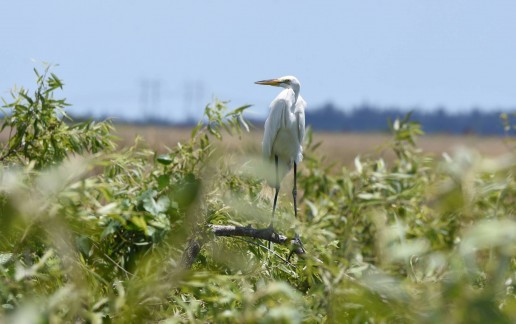
Gators aren’t the only Everglades wildlife you’ll see during your visit. There are over 300 bird species here, the most interesting being wading birds and birds of prey, and you’ll hear and see many of them. Most wading birds like the Great Egret and Great Blue Heron stalk the shallow marshes for fish, quickly using their pointed beaks and long necks to catch them.
In areas with deeper water, anhingas can be see diving while swimming and emerging with fish. If you keep an eye on the tree tops, you’ll spot birds of prey like red-shouldered hawks, ospreys, and even peregrine falcons, if you don’t see them in flight.
Explore several different habitats
Along with the diverse wildlife, you child will see the unique habitats that make up the Everglades. An airboat eco tour can take you to hardwood hammock forests, alligator-filled sawgrass marshes, and islands of cypress trees. With knowledgeable, fifth-generation Gladesmen guiding you tour, you’ll learn about the ecology of this unique environment while enjoying the fast paced thrill of an airboat ride.
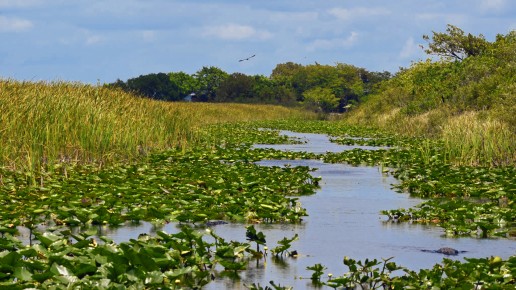
Children are effortlessly prone to distraction. Getting and keeping the attention of a child is an act most parents would call a superpower. Kids can’t help but have a sharp sense of novelty and adventure because everything is new to them! But, do you remember the first time you saw the ocean, or even a full moon rise?
It’s moments like these that make memories for a child that last a lifetime. The fun and excitement of introducing them to the Florida Everglades on an airboat ride could be one of those moments.
Swamp Squatch: Legend of the Skunk Ape
It’s said that a mysterious creature dwells deep within the Florida Everglades, a large ape that walks upright and stands over seven feet tall. When sightings of it throughout Florida were at their peak in the 1960’s, it was dubbed the “Skunk Ape”. Why call it Skunk Ape and not just Florida Bigfoot? Well, nearly all reported encounters with it mention it smelling like anything from moldy garbage to rotten eggs, or even a skunk.
Sightings in the Everglades and Beyond
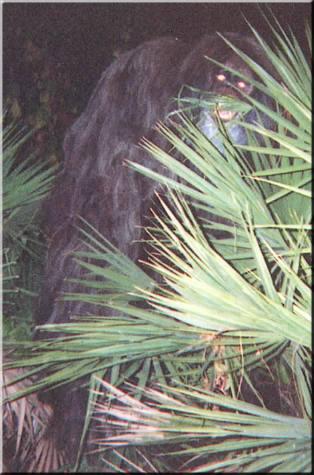
While not as frequent as they were in the 1960’s and 1970’s, sightings of the Skunk Ape are reported in Florida every year, some outside of the Everglades. One of the most noteworthy encounters occurred in the fall of 2000, referred to as the “Myakka Skunk Ape”. The Sarasota Sheriff’s Department received two photographs depicting a large, upright ape along with an anonymous letter from the alleged photograph.
In the letter, which was apparently written by an elderly woman, she snapped photos of the animal she believed had been taking apples she had left in her backyard. The encounter has been picked apart by debunkers and cryptid fans alike. But while the story and creature are scrutinized, the pictures have been confirmed as real and not doctored.
Skunk Ape – Florida Hide and Seek Champion
Apart from being stinky, the Skunk Ape can definitely be described as elusive. Despite a steady flow of video footage from alleged encounters and molds made from footprints, the National Park Service denies the existence of the creature. They cite their many wildlife life trail cameras showing no such animal, or having never discovered any trace of bones in the Everglades.
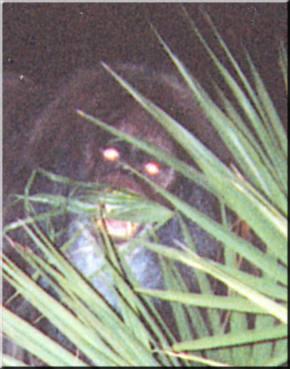
But some of the believers would be quick to tell you that with the Florida Everglades covering 1.5 million acres, and much of it rarely visited by humans, a reclusive animal could thrive there unnoticed without a trace.
A Symbol of a Mysterious Swamp
The Everglades is truly a vast place, full of Florida wildlife capable of deceiving the eyes of the casual visitor. When taking a private airboat tour, you might notice an alligator that you assumed was a floating log, or a diving anhinga that you thought was a water snake. The Skunk Ape isn’t just a campfire tale, but a symbol of the mystery of the Florida wilderness.
Still, don’t hold your breath hoping to see it. But if you do, hold your nose.
Everglades Wet Season, For an Adventure All Your Own
From the River of Grass to the Hardwood Hammock, a noticeable change is now happening in the Florida Everglades, the beginning of the “Wet Season”. From May through November, the Everglades experiences its hottest and most humid temperatures of the year, as well as the highest amount of rainfall. Both the temperatures and humidity percentage average around 90.
The increased rainfall and humidity is partly caused by storms and moisture coming from the Tropics. The Everglades wet season takes place at the same time as the Atlantic Hurricane season, when tropical storms and hurricanes are likely to form. Although these storms pose a threat if they were to make landfall, the National Hurricane Center is very good at tracking them and helping people prepare. Thankfully, South Florida hasn’t seen a major hurricane in over a decade!
Some Everglades Wildlife Like the Rain More
Despite the change in weather during the wet season, it’s actually a great time to take an Everglades airboat tour. Though more scattered now due to the abundance of water, wading birds that nested during the dry season are now raising their young and showing them how to hunt for fish. But, the biggest Florida wildlife star of the season is the American alligator.
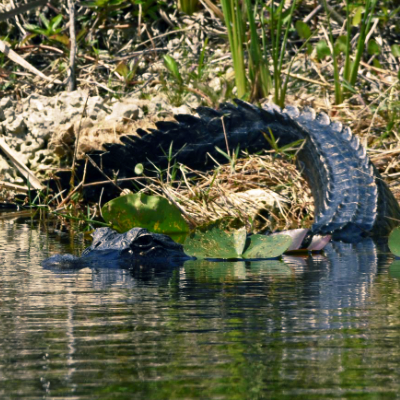
Through the summer months, alligators are the most active animal in the Florida Everglades. Their mating season stars around June, followed shortly by nesting and hatching, with the small roars of baby alligators filling the air by August. It’s during this time that they build their dwellings called “alligator holes”, which hold water collected during this time and help to serve as an oasis to other Everglades wildlife.
Less Wading Birds, But Not Less Animals
Gators aren’t the only cold-blooded creatures that like to play in the rain. While you’re out on an Everglades airboat tour, you’re likely to see a lot of different species of amphibians like frogs and salamanders all along the airboat trails.
The wet season brings an increase of insects to the Everglades, providing them with a feast to snack on. But the frogs can only eat so many of them, so we make sure to provide you with bug screen to keep their leftovers at bay!
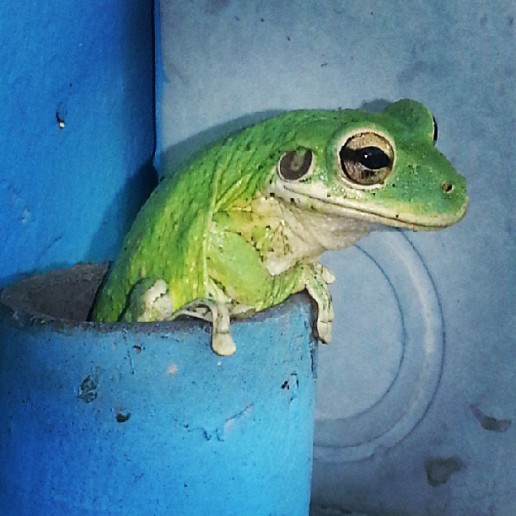
A Private Airboat Tour Feels More Private Now
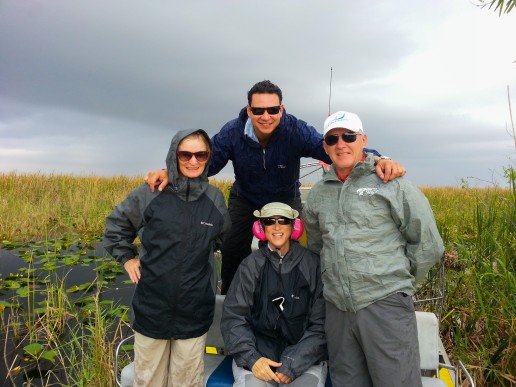
For what the Everglades lacks during the wet season in terms of concentration of wildlife, it makes up for in openness and privacy, making a private airboat tour a much more personal experience. And if you’re a Florida resident that’s been waiting for the snowbirds to clear out so that you can enjoy your own backyard, then your time has come!
Postcards From Heaven: Everglades Sunsets
South Florida is praised for its many beaches, largely because of the glorious sunrises that happen there. Since another ocean isn’t that close by, people enjoying their vacation near Miami or Fort Lauderdale tend not to think much of sunsets. Little do they realize that there is a body of water in South Florida where the sunsets rival the sunrise over the sea, the Everglades’ own River of Grass.
The Science of Florida Sunsets
People often consider Florida Everglades sunsets to look like paintings, and like a real painting, sunsets are the result of combining different materials. Some people think having a lot of dust in the atmosphere enhances sunsets, but having clean air is the biggest factor in making epic sunsets.
Clean air helps scatter violet light wavelengths more than other ones because they are closer to the same size as air molecules, more than red light. A good example of this at work is seeing a blue sky overhead through polarized sunglasses on a clear day: notice how much more bold the blue is?
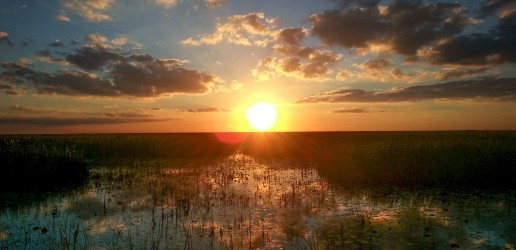
Sunlight takes longer to travel through the atmosphere at sunrise and sunset, and scatters more violet and blue light, showing more orange and red.
The Everglades Wet Season Lends a Hand
In the Everglades, when you move further away from the coast, you definitely get more fresh air than in the city. Out here, far west of cities like Miami, Hollywood, and Fort Lauderdale we also get plenty of another important ingredient for making a beautiful sunset, clouds! The Everglades wet season, which runs from mid-May until November, brings a lot of them in the afternoon, and they help set the stage for many colorful evenings.
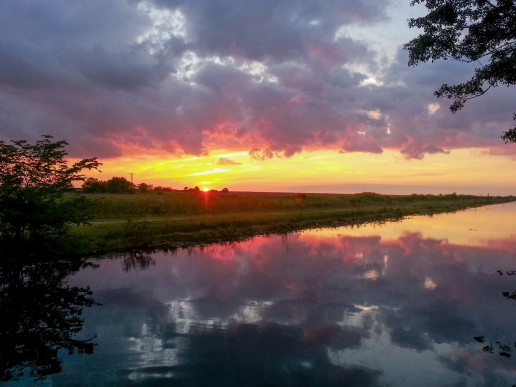
With the air quality in the Florida Everglades being much better than it is in the city, clouds in the lower atmosphere can help add color to sunsets. But the most dazzling colors of an Everglades sunset show up after the sun passes through that layer of clouds. As the sun sinks past the lower atmosphere through the dust and haze, more sunlight reaches higher altitude clouds, producing vivid colors.
Living in this unique corner of Florida, the Gladesmen Culture brings us face to face with a wide variety of Florida wildlife, traveling across miles of different habitats in airboats, and facing extremes of seasonal weather. But at the end of each day, we’re regularly treated to beautiful sunsets that serve as postcards of another day in paradise, a paradise that’s ours to share with you.
2 Seasons in the Everglades?! We Can Explain
The Florida Everglades is a one-of-a-kind environment. But, this is largely due to the fact that Florida is the only state in the continental United States closest to the Tropics. This location makes us both the envy of people living in the blizzard-prone, northern states as well as a coveted winter vacation destination by them.
It’s easy to see why: Florida’s sub-tropical climate lets both residents and visitors alike relax along its many beaches or enjoy the excitement of airboat rides year-round. But the Florida Everglades doesn’t really have four seasons.
Sounds strange, right? We can explain.
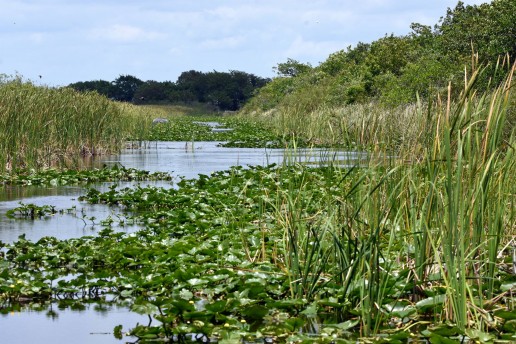
You may recall from science class that the tilt of the earth and its rotation around the sun change the amount of sunlight and heat we get throughout the year, giving us four seasons: spring, summer, autumn, and winter. As we mentioned earlier, Florida’s location being closer to the equator means that it stays warmer on average than other states. Because of Florida being in this fortunate position, the Everglades experiences only two seasons a year.
If you are guessing which ones they are, no, the two seasons are not spring and summer, or even spring and autumn. In fact, differences in sunshine and temperature are not the biggest overall signs of changing seasons in the Everglades. Changes in water levels during the year are what determine which season that the Everglades is currently in.
Everglades Rain Season, Everglades Dry Season
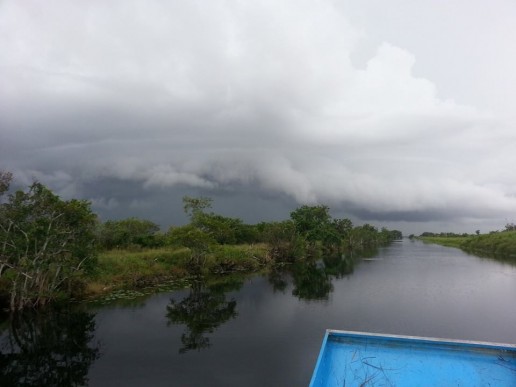
From the middle of May through November, the Everglades experiences heavy rainfall, known as the wet season. Moving into December on through April, there is little to almost no rain, which is known as the dry season. While these two very different seasons sound extreme, the Everglades wildlife treats it like we would a calendar.
The dry season is the peak of bird activity in the Everglades. Migratory birds wait out the cold, northern winds and eventually chase them back home as the temperature rises. The native Florida wading birds use the low water levels to make nests, making dry season and their hatching season one in the same. During the wet season, the alligators, turtles, and frogs nest and hatch, as the wading birds teach their young to hunt.
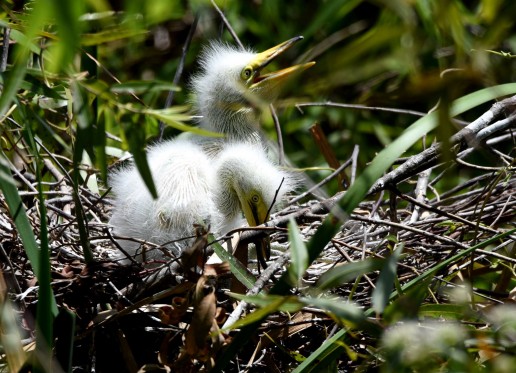
The incredible biodiversity of the Florida Everglades allows you see it thriving at any time of year. With that said, what would you want to see there? You can plan your journey to Mack’s Fish Camp by clicking here.

